AL-QAIDA MEMBERS
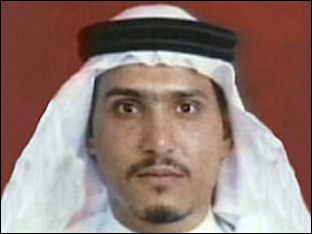
Abu Ayyub al-Masri There are three kinds of Al-Qaida members and supporters: 1) the fighters formally based in Afghanistan or Pakistan that were directly under Al-Qaida s control; 2) Islamic militants scattered around world that have various kinds of ties to Al-Qaida; and 3) non-militant supporters and admirers.
The second group is regarded as the most dangerous. Many were trained at Al-Qaida camps and operate in independent cells. They often hatch their own plans and rely on Al-Qaida mainly for financial and logistical support. They do not need to be in contact with Al-Qaida leaders and thus are difficult to detect and link to Al-Qaida.
The large number of well-educated but unemployed and frustrated young men both in the Muslim world and outside it are regarded as the ideal recruits. They are sometimes attracted by promises of 72 virgins in the afterlife if they die as martyrs in a suicide attack and by ideals of avenging injustices directed at Muslims and upholding the honor of Muslim women.
Elite Al-Qaida members travel around the globe using false identities and false passports. They shave off their beards and travel with duty-free alcohol to avoid detection. Many have lived in Europe or North America, speak good English or European languages and are comfortable and move freely in the West.
Al-Qaida is believed to have cells in 40 to 60 countries. According to a May 2004 report by the Institute for Strategic Studies (ISS) Al-Qaida had more that 18,000 members ready to strike against U.S. targets in Iraq. The report also said: 1) anti-Americanism generated by the Iraq war was helping immensely to win new recruits; 2) Al-Qaida finances were in good order; and 3) its middle managers provided expertise to Islamic militants around the globe.
Al-Qaida Members, Politics and Religion

A Alhaznawi, 9-11 Hijacker On the belief that Al-Qaeda members come from repressive countries in the Middle East, Jessica Stern wrote in Washington Post: Al-Qaeda's core organization... is now based in Pakistan, but terrorist organizations claiming to be its affiliates include North Africa's al-Qaeda in the Islamic Maghreb, Jemaah Islamiah in Indonesia and al-Shabab, which is fighting in southern Somalia and has been recruiting Westerners. The organization also has a more amorphous following of independent cells and individuals around the world. It is almost impossible to target or quantify this following because it isn't centralized in any one location. Such self-made terrorists can be found anywhere, even in Fort Hood, Tex. [Source: Jessica Stern, Washington Post , January 10, 2010; Stern serves on the Hoover Institution Task Force on National Security and Law and is a lecturer at Harvard Law School. She is the author of "Terror in the Name of God: Why Religious Militants Kill."]
More broadly, there is no particular political system that reliably promotes or deters terrorism. And democracy is not the cure-all it is often assumed to be. There are many more terrorist incidents in democratic India, for example, than in non-democratic China or Saudi Arabia. (This may be because authoritarian regimes are good at controlling terrorism within their borders.) And economist Alberto Abadie of Harvard University has found that the transition to democracy can be a particularly dangerous period with regard to terrorism -- consider the experiences of Spain in the late 1970s, Russia after the fall of communism and Iraq today. Failed and failing states, such as Yemen and Somalia, also make particularly fertile ground for terrorism.
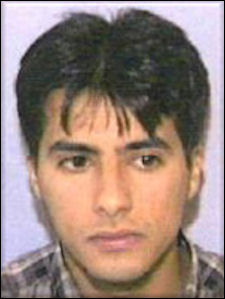
Ahmed al-Nami, 9-11 Hijacker On the assumption that Al-Qaeda is made up of religious zealots, Stern wrote: To the contrary, rank-and-file terrorists who claim to be motivated by religious ideology often turn out to be ignorant about Islam. The Saudi Interior Ministry has questioned thousands of terrorists in custody about why they turned to violence, and found that the majority did not have much formal religious instruction and had only a limited understanding of Islam. According to Saudi officials, one-quarter of the participants in a rehabilitation program for former jihadis had criminal histories, often for drug-related offenses, whereas only 5 percent had been prayer leaders or had other formal religious roles.
In the Netherlands and elsewhere in Europe, second- and third-generation Muslim youths are rebelling against what they consider the culturally contaminated Islam that their parents practice and that is promoted in their local mosques, favoring instead the allegedly purer Islam that they discover online or via imams from the Middle East. But the form of Islam they turn to is often highly unorthodox. For example, the Hofstad group in the Netherlands -- a network of radicalized young Muslims -- practiced a sort of do-it-yourself Islam cobbled together from Web sites and the teachings of a self-taught Syrian imam who is also a former drug dealer. And groups linked to al-Qaeda, including in Somalia, have been begun using anti-American hip-hop music or "jihad rap" in their recruitment videos, even though such music is considered counter to the extremist version of Islam promoted by the terror network. Rather than Islam leading young recruits toward al-Qaeda, it may be an ignorance of Islam that renders youths vulnerable to al-Qaeda's violent ideology.
Al-Qaida Rules and Initiation
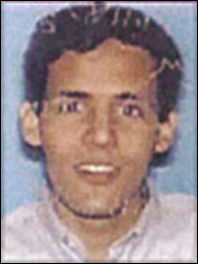
Majed Moqed, 9-11 Hijacker Part of a document labeled Tareekh Osama [Osama s History]/54/127 127a described as minutes from the meeting in which Al-Qaida was founded read: Al-Qaeda is basically an organized Islamic faction; its goal will be to lift the word of God, to make His religion victorious. Requirements to enter Al-Qaeda: 1) Members of open duration [meaning open-ended commitment]. 2) Listening and obedient. 3) Good manners. 4) Referred from a trusted side. 5) Obeying statutes and instructions of Al-Qaeda. [Source: Peter Bergen, Vanity Fair, January 2006]
The pledge [to join al-Qaeda]: The pledge of God and his covenant is upon me, to listen and obey the superiors, who are doing this work, in energy, early-rising, difficulty, and easiness, and for his superiority upon us, so that the word of God will be the highest, and His religion victorious.
New Al-Qaida members are reportedly required to make a solemn oath. They bend down on their knees while holding the hand of a leader nd pledge to be one of Islam s soldiers...on the road to jihad. Aftethat r the new initiate is embraced by all Al-Qaida members present. [Source: Newsweek, May 21, 2007]
Tips for New Al-Qaida Member

Hamza al-Ghamdi, 9-11 Hijacker The Yemen-based Al-Qaeda in the Arabian Peninsula's (AQAP) s Inspire magazine is a 67-page publication available from jihadist forums that are sometimes password-protected or otherwise difficult to access, according to SITE Intelligence, a US service that monitors Islamist websites. [Source: W.G. Dunlop, AFP, July 12, 2010]
"What to Expect in Jihad" offers advice for those who decide to take the fight abroad: "When coming to any land of jihad, it is important to be able to speak the local language fluently," the article advises. It also suggests that would-be mujahedeen (holy warriors) bring a friend with them, and that they learn as much as possible about local culture before travelling.
The article also offers packing advice, saying that, "When on jihad, one has to bear in mind that they will have to pack light." It goes on to recommend that mujahedeen bring a "well-built backpack," several pairs of weather-appropriate clothes, "body-cleansing items" and "flexible boots." Items such as computers and MP3 players can also be brought along. The article warns, however, that cell phones with SIM cards in place can be "dangerous," and, along with cameras, should not be used without permission. Religious books make up most of the section on reading material to bring.
Tips for the Traveling Al-Qaida Terrorist

Hamza al-Ghamdi, 9-11 Hijacker Alan Cullison wrote in The Atlantic Monthly: The al-Qaeda desktop computer contains voluminous "security" files devoted to, among other things, modern spycraft. The training offered is practical; students are told, for example, how to photograph a bombing target, use invisible ink, and evade police surveillance. The computer's manuals also focus on the broader history of partisan warfare and refer to an eclectic collection of role models, among them Aristotle, Jesus, Ahmed Kamel (the former head of Egyptian General Intelligence), and even the Israeli leader Menachem Begin, whose book The Revolt (1951), about his days as a terrorist fighting British rule in Palestine, is quoted approvingly at great length. [Source: Alan Cullison, The Atlantic Monthly, September 2004, from files found on a computer used by Al-Qaida leader Ayman al-Zawahiri]
The manuals devote special care to teaching recruits how to pass unnoticed in the West, and include the following advice: Don't wear short pants that show socks when you're standing up. The pants should cover the socks, because intelligence authorities know that fundamentalists don't wear long pants If a person, for example, wears a T-shirt or a shirt that has the drawing of a spirit that is, a bird, an animal, etc. don't cut off the head [the Islamic tradition frowns on the depiction of living beings]. Either wear it with the drawing, or don't wear it at all. Moreover, you should never carry any item of clothing in your suitcase where the pictures have been tampered with, or where the head of the animal or bird has been cut off.
Don't wear clothes made in suspect countries such as Iran, Pakistan, Iraq, Libya, Sudan, North Korea, Cuba, etc. Underwear should be the normal type that people wear, not anything that shows you're a fundamentalist. A long time before traveling especially from Khartoum the person should always wear socks and shoes, to get rid of cracks [in the feet that come from extended barefoot walking], which take about a week to cure If the mission requires wearing a chain, you should show it by opening the top buttons of the shirt
Never use the perfumes used by the brothers [fundamentalists]. You should differentiate between: a) Perfume used only after shaving "After Shave" is written on the bottle. This type is used only on the chin and nowhere else. b) Perfumes marked "Lotion" that are placed anywhere on the clothes, on the head, behind the ears, etc. You should use the type of perfume for the underarms that usually comes in the shape of a soap ball. You should never use any other type of normal perfume under the arms. You should differentiate between men and women's perfume. If you use women's perfume, you are in trouble.
Story of Young Saudi Who Became an Al-Qaida Member

Mohamed Atta, 9-11 Hijacker Faiza Saleh Ambah wrote on the Washington Post: In 1995, a Saudi named Khalid al-Hubaysh
was a 19-year-old college student looking for more meaning in his life. Bin Laden was a hero to many Muslims, and aiding Muslims in distress seemed like the most admirable and altruistic route. He was initially inspired by a fiery taped sermon extolling the virtues of waging war against the enemies of Islam, but a series of videotapes produced by Arabs fighting in Bosnia completed his transformation. The tapes showed Muslim women and children sprawled dead and bloodied in a market. One woman's head had been blown off. Muslim civilians with rifles were shown fighting the Serbian army, and the only ones helping them, Hubayshi said, were Arab fighters trained in Afghanistan during the war against the Soviets. "I couldn't sleep at night knowing that women were being raped and children slaughtered, just because they were Muslim," he said. "I had to do something." [Source: Faiza Saleh Ambah, Washington Post, March 24, 2008]
By the time he got in touch with the Arabs fighting in Bosnia, the war was over. So Hubayshi took a five-week vacation from his new job at the utilities company and made his way to the southern Philippines, where he lived in wooden shacks in a humid jungle camp for Arab fighters. He said he slept well for the first time since seeing the Bosnia tapes. But the Philippine separatists lay low most of the time he was there, and he soon felt restless and yearned for better training.
His contacts arranged for him to go to Afghanistan, and in 1997 he went to a camp in the southeastern city of Khost. He learned to fire antiaircraft missiles, antiaircraft machine guns, antitank weapons and rocket-propelled grenades and became an expert in explosives. Afghanistan had become mostly ethnic. He packed his bags to return to Saudi Arabia. "I was not there . . . to help Afghans fighting Afghans for political gain," he said. "If I was going to die, I wanted to die fighting for something meaningful."
As he was making his way home, he was arrested in Pakistan at the Peshawar airport and sent to prison. Hubayshi said that he was released two months later but that the Pakistanis kept his passport. He traveled on a fake passport to Yemen and was smuggled into Saudi Arabia, where he returned to work at the utilities company. Two years later, he learned that he was wanted for questioning by Saudi authorities. Not willing to risk jail, he left the country on a fake passport and returned to Afghanistan in May 2001, he said.
In the years that he had been away from Afghanistan, al-Qaeda's influence had spread and the organization had become more like a corporation, he said, with company cars and many safe houses. The Taliban, a radical Islamist militia that had taken control of most of the country by 1996, had also grown more powerful. Hubayshi became adept at making remote-controlled explosive devices triggered by cellphones and light switches. Impressed by his skills, an associate of bin Laden's asked him to join al-Qaeda, or at least meet with bin Laden, he said.

Marwan al-Shehhi,
9-11 Hijacker In the summer of 2001, Hubayshi recalled, he spent half an hour with bin Laden at a converted military barracks near the city of Kandahar. The two sat on carpets in bin Laden's office and shared a fruit platter. "What are my duties toward you, and what are your duties toward me, if I join with you?" Hubayshi said he asked. "That you don't betray us and we don't betray you," bin Laden responded, and offered him a plot of land, Hubayshi said. But bin Laden's "fight had changed from defending Muslims to attacking the United States. I wasn't convinced of his ideology. And I wanted to be independent, not just another minion in this big group."
On Sept. 11, 2001, Hubayshi said, he was training Chechen fighters in explosives in the eastern city of Jalalabad. In October, when the first U.S. airstrikes hit Jalalabad, the Afghans "blamed us . . . and forced us out of the city at night. We slept by the river for two weeks." Weeks later, an associate of bin Laden came seeking experienced fighters, and those without families left for Tora Bora. In the trenches there, the fighters ate and slept and cleaned their weapons, surrounded by the distant sounds of bombardments.
As the airstrikes moved closer, and with the United States' Afghan allies advancing, bin Laden decided to retreat and left one morning. His aides told 300 Arab fighters to make their way to Pakistan and surrender to their embassies. Pakistani authorities stopped the fighters near the border and handed them over to the U.S. military, which sent them to Guantanamo Bay. Hubayshi remains bitter about what he considers bin Laden's betrayal: calling the fighters to Tora Bora and then abandoning them there. "The whole way to Cuba, I prayed the plane would fall," he said. "There was no dignity in what he made us do."
Story of Osama bin Laden s Driver
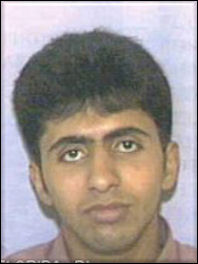
Mohand al-Shehri,
9-11 Hijacker Jonathan Turley wrote in the New York Times: When Salim Hamdan was born in 1970, the horizon of his life extended little beyond his poor Yemeni village and a life (if he was lucky) as a farmer like his father. He was anything but lucky. His mother died when he was 7, his father when he was 11, and he soon found himself living on the streets of Mukalla. He eventually found work as the driver of a dabab, a beat-up minibus stuffed with riders making just enough to rent a mattress in a flophouse and a daily supply of the mild narcotic khat to chew away his problems.[Sources: Jonathan Turley, a professor of public interest law at George Washington University, New York Times, August 21, 2008; “The Challenge, Hamdan v. Rumsfeld and the Fight Over Presidential Power” by Jonathan Mahler (Farrar, Straus & Giroux, 2008)]
Yet, within a few years, this dabab driver with a fourth-grade education would occupy not only a cell in Guantánamo Bay but also the minds of members of the Supreme Court and the president of the United States....Like Ernesto Miranda (the inspiration for Miranda rights), Mr. Hamdan is hardly a compelling figure, and his prosecution was not unwarranted. Initially hostile to his non-Muslim lawyers, and an adherent of the most medieval form of Islam, Mr. Hamdan deserved punishment for his service to Al Qaeda. Yet his victory would stand as a critical limitation on the powers of the world s most powerful leader, requiring that he afford detainees basic protections under the Constitution and international law.
Recruited from the dirty streets around the Martyrs Mosque, Mr. Hamdan joined a ragtag group of jihadists trying to find a path through Afghanistan to Tajikistan to fight the Russian-backed government. When their path was blocked by the fearsome warlord Ahmed Shah Massoud, they ended up starving and wandering jihadists without a cause. They eventually found food and a cause in the camp of a radical sheik recently thrown out of Sudan: Osama bin Laden.
Mr. Bin Laden personally instructed the group in the ways of jihad for three days. Yet, of the 35 jihadists, only 17 stayed including Mr. Hamdan, although he did not prove particularly strong in either his beliefs or his skills. He was used as a mechanic and a driver for Mr. bin Laden, and he was with him on Sept. 11, 2001, as he negotiated mountaintops to get a satellite signal to allow him to watch the planes crash into the Twin Towers. (Terrorist leaders appear to have the same complaints about television reception as everyone else, and Mr. bin Laden was forced to listen to the events unfold on the radio.)
Ultimately Mr. Hamdan was captured by members of the Northern Alliance, who sold him to the United States for $5,000. There is no evidence that he had ever fired a shot in anger or attained a status above mujahadeen mechanic. In July 2008 he was tried by a military tribunal and convicted. To the obvious displeasure of many in the Bush administration, the military panel gave him only 5 ½ years far less than the 30 years prosecutors sought (and notably far less than what he would have likely received if he had been taken immediately to a federal court on terrorism charges). Given his time served, he could be released in a matter of months, but the administration has indicated that it will simply declare him an enemy combatant in order to hold him indefinitely despite the ruling of its own tribunal.
Book: The Challenge, Hamdan v. Rumsfeld and the Fight Over Presidential Power by Jonathan Mahler (Farrar, Straus & Giroux, 2008)
Path to Osama bin Laden s Driver and Guantanamo Detainee
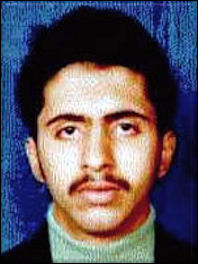
Mohand al-Shehri,
9-11 Hijacker Jonathan Mahler wrote in Time: Hamdan's journey began in 1996 when he first met Nasser al-Bahri outside a mosque in Sana'a, the capital city of Yemen. At the time, al-Bahri, a well-educated Saudi and veteran holy warrior, was assembling a small army of jihadis to fight alongside Tajikistan's Islamic insurgency against its Russian-backed government. Hamdan was by all accounts an easy convert. Orphaned at a young age, he found a father figure in the confident and committed al-Bahri and a purpose in jihad. [Sources: Jonathan Mahler, Time, July 24, 2008; “The Challenge, Hamdan v. Rumsfeld and the Fight Over Presidential Power” by Jonathan Mahler (Farrar, Straus & Giroux, 2008)]
Al-Bahri ultimately managed to recruit 35 men, mostly Yemenis like Hamdan, but they were stopped in Afghanistan before they could make it to Tajikistan. The ensuing days would change Hamdan's life forever. At loose ends and casting about for a cause, one of the jihadis suggested that they go see a man named Osama bin Laden. Hamdan's group arrived at bin Laden's camp in the caves of Tora Bora only days before Ramadan, Islam's holiest time of the year. For three days they listened to bin Laden preach about the religious imperative of reversing America's presence in the Persian Gulf and of changing the approach to fighting Islam's enemies. "[Bin Laden] said we must carry out painful attacks on the United States until it becomes like an agitated bull, and when the bull comes to our region, he won't be familiar with the land, but we will," al-Bahri told me in Yemen.
Hamdan made himself useful as a mechanic and driver. He ultimately ended up serving bin Laden himself as a chauffeur and bodyguard, following the al-Qaeda leader when he relocated for security reasons to Tarnak Farms, a walled compound 30 minutes outside Kandahar. According to both al-Bahri and fbi interrogator Ali Soufan, Hamdan had bin Laden's trust but was not a member of his inner circle. Their accounts differ when it comes to Hamdan's level of involvement with al-Qaeda. Al-Bahri characterized him as a circumstantial participant, someone with limited options who just needed a job, while Soufan said he was undeniably part of the al-Qaeda conspiracy, pointing out that Hamdan swore a bayat, or oath of loyalty, to bin Laden.
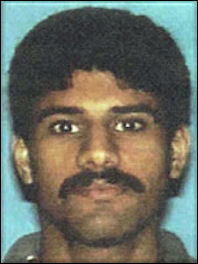
Nawaf al-Hazmi, 9-11 Hijacker In the days leading up to 9/11, Hamdan joined a small motorcade of al-Qaeda leaders, including bin Laden and his top lieutenant, Ayman al-Zawahiri, who drove into the mountains to watch the hijacked planes crash into the World Trade Center and the Pentagon on satellite TV. Hamdan was also at bin Laden's side--as a driver--in the weeks that followed, while the motorcade moved from one guesthouse to the next as bin Laden and al-Zawahiri readied their remaining fighters for America's imminent invasion.
In late November, with U.S. forces sweeping across Afghanistan, Hamdan returned to his home in Kandahar for his young daughter and pregnant wife and drove them toward Pakistan. What happened next is a source of dispute between Hamdan and the government. According to his defense lawyers, Hamdan figured that he would be arrested if he tried to cross the border, so he instead dropped off his family and was planning to return the car, which he had borrowed, before finding a different way into Pakistan. Soufan and government prosecutors say that Hamdan remained in Afghanistan to fight alongside al-Qaeda and the Taliban. Their account is corroborated by the fact that the Northern Alliance forces that captured Hamdan in Afghanistan hours after he left his family at the border found two surface-to-air missiles in the trunk of his car.
There is evidence, though, that some of the information Hamdan provided to his interrogators was extracted by coercion. According to Hamdan, the Northern Alliance soldiers hog-tied him with electrical wire, placed a hood over his head and turned him over to the Americans for a $5,000 bounty. At the U.S.'s Bagram air base, Hamdan was allegedly kept bound hand and foot 24 hours a day. During his early interrogations, he claimed that he was in Afghanistan working for a Muslim charity. But after another detainee identified him as bin Laden's driver, Hamdan confessed. In May 2002, Hamdan was flown to Guantánamo Bay, where he became detainee No. 149. Eighteen months later, President Bush chose him from among thousands of detainees in U.S. custody to be the first Arab defendant in the military tribunals.
Abu Ubaida al Masri, Al-Qaida Bombmaker
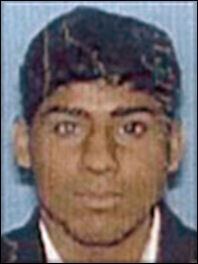
Salem al-Hazmi, 9-11 Hijacker Sebastian Rotella wrote in the Los Angeles Times: Abu Ubaida al Masri is a stocky Egyptian explosives expert with two missing fingers. Hardly anyone has heard of him outside a select circle of anti-terrorism officials and Islamic militants. But as chief of external operations for Al Qaeda, investigators say, he has one of the most dangerous -- and endangered -- jobs in international terrorism. Authorities know only bits and pieces of his biography. They know his face, having identified an unreleased photo, but not his real name. [Source: Sebastian Rotella, Los Angeles Times, April 2, 2008 ]
Masri has overseen the major plots that the network needs to stay viable, investigators say: the London transportation bombings in 2005, a foiled transatlantic "spectacular" aimed at U.S.-bound planes in 2006, and an aborted plot in Copenhagen. "He is considered capable and dangerous," a British official told the Los Angeles Times. "He is not at the very top of Al Qaeda, but has been part of the core circle for a long time. He is someone who has emerged and grabbed our attention as others were caught or eliminated in the last couple of years. Perhaps he rose faster than he would have otherwise."
Masri's emergence reflects Al Qaeda's resilient, hydra-like structure. As leaders fall, mid-level chiefs step up, shifting tactics and targets with determination and innovation. The plots attributed to Masri were ambitious, but authorities infiltrated two cells long before they could strike. Some trainees seemed more fierce than talented. And the number of seasoned field commanders dwindles, former CIA officer Marc Sageman said in an interview.
Life of Abu Ubaida al Masri, Al-Qaida Bombmaker
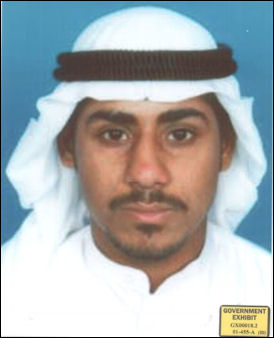
Salem al-Hazmi, 9-11 Hijacker Sebastian Rotella wrote in the Los Angeles Times: Masri is in his mid-40s, according to an Italian translation of a German investigative file. His nom de guerre means "The Egyptian Father of Ubaida." Little is known about his youth. He belongs to a generation of Egyptians who have dominated Al Qaeda since they fought the Soviets in Afghanistan, officials say. [Source: Sebastian Rotella, Los Angeles Times, April 2, 2008 ]
Masri followed the classic itinerary after Afghanistan, officials say. He fought in Bosnia-Herzegovina in the early 1990s, went on to Chechnya and was wounded, according to the Italian file. He lost two fingers -- a common disfigurement suffered by Al Qaeda veterans from combat or explosives. Masri also spent time in Britain, according to the file. In 1995, he surfaced in Munich, Germany, under an alias and requested asylum. His associates there included a Moroccan computer science student who married the daughter of Ayman Zawahiri, Osama bin Laden's deputy, and Jordanian operatives who led a 2002 plot for shooting attacks on Jews.
In 1999, authorities rejected Masri's asylum claim and jailed him pending deportation. But he was released instead for reasons that are unclear. After that he made his way to an Al-Qaida camp in Afghanistan , where he was taught about explosives, artillery and topography, according to the file. Shadi Abdalla, a former Bin Laden bodyguard, described him in later testimony as 5 foot 7, muscular and tanned, with graying black hair and a graying beard.
During the U.S.-led military operation in Afghanistan in late 2001, Masri fought in the 055 Brigade, a paramilitary unit that took heavy casualties covering Bin Laden's escape into Pakistan, according to Rohan Gunaratna, author of "Inside Al Qaeda." Holed up in the border region, the survivors split into two wings, he said. Internal operations ran combat in Pakistan and Afghanistan, where Masri helped the Taliban regroup. External operations oversaw attacks elsewhere.
After the capture in 2003 of Khalid Sheik Mohammed, the self-proclaimed Sept. 11 mastermind, Masri's duties shifted. He joined a group of chiefs who tried to keep targeting the West, mainly Britain. They succeeded on July 7, 2005, killing 52 people in synchronized public transportation bombings in London. The lead bombers were groomed in Pakistan by Abdul Hadi, a former Iraqi military officer, according to officials and court testimony. Masri's name emerged as a planner working with him. "He's considered a player," a U.S. anti-terrorism official said. "He comes up on the radar screen a few months after July 2005." In January 2006, an airstrike killed 18 people in the Bajaur region of Pakistan. The press reported, inaccurately, that Masri and three other leaders died in the rubble.
Abu Ubaida al Masri, Al-Qaida Bombmaker, Moves Up in Al-Qaida
Adam Gandahn, American
al-Qaida member Sebastian Rotella wrote in the Los Angeles Times: By 2006 Masri had embarked on his biggest task yet: a mega-project intended to match the carnage of the Sept. 11 attacks by blowing up airplanes en route from Britain to the United States. Half a dozen British militants traveled to Pakistan for training. "He was involved in recruiting, overseeing the lesson plan, so to speak," the U.S. anti-terrorism official said. The innovative techniques required special instruction. Masri envisioned his operatives injecting the liquid explosives, a highly concentrated hydrogen peroxide mix, with a syringe into the false bottoms of innocuous containers such as sports drinks, sneaking the components aboard and assembling bombs after takeoff. [Source: Sebastian Rotella, Los Angeles Times, April 2, 2008 ]
"The airline plot is his thing," a Western intelligence official told the Los Angeles Times. "And it is a major plot. Investigators think only one or two trainees had contact with Masri. Trainees had autonomy to instruct and supervise a dozen fellow militants back in Britain, officials say. In turn, investigators believe Masri got direction from his bosses, who often communicate with the command structure through messengers. "We have patchy intelligence on the relationship and structure between external operations figures and Zawahiri and Bin Laden," the senior British official said. "In the really big plots, we think they played a role."
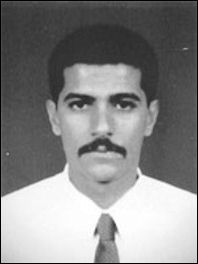
Abdullah Ahmed Abdullah Investigators monitored the plotters for months, managing to film inside their London safe house. In August 2006, police rounded them up. The attack was weeks away and would have targeted five planes, the U.S. anti-terrorism official said. Three months later, Pakistani helicopter gunships blew up a remote madrasa, killing about 80 people but missing Masri, officials say. In late 2006, however, Israeli, Turkish and U.S. spies teamed up to capture Hadi, the former Iraqi military officer, in Turkey as he was en route to Iraq to improve relations with the Al Qaeda offshoot there, officials say.
Masri assumed more control. He allegedly turned his aim to another part of Europe he knows. Last spring, he taught bomb-making in compounds in North Waziristan to aspiring suicide attackers, including a 21-year-old Pakistani living in Denmark and a 45-year-old Pakistani-German, according to U.S. and European officials. A U.S. anti-terrorism source sees Masri's role as a symptom of decline. "The fact he trained them himself shows you some of the limitations of the network," the source said. In any case, Masri's pupils apparently displayed more fervor than stealth. Aided by U.S. intercepts of communications to Pakistan, Danish police put the 21-year-old under surveillance along with his associates, one of whom had been in Pakistan at the same time. As in London, police got deep inside the alleged cell, U.S. and European officials say. That plot too was foiled.
Al-Qaida Drop Outs
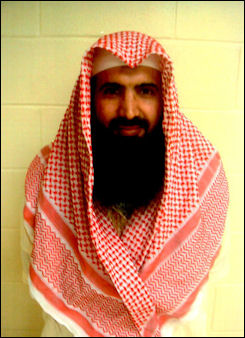
Ali Saleh Kahlah Al Marri Michael Jacobson wrote in the Washington Post: Al-Qaeda prides itself on its esprit de corps, but key members have turned against the group from its earliest days. These include Jamal Ahmed al-Fadl, a Sudanese radical who was one of al-Qaeda's first members and helped work (unsuccessfully) in the early 1990s to procure uranium for the organization; Essam al-Ridi, an Egyptian veteran of the 1980s jihad against the Soviets who later purchased an airplane in the United States to help ship Stinger missiles from Pakistan to Sudan; and L'Houssaine Kherchtou, a Moroccan who trained to serve as bin Laden's personal pilot. (All three became prosecution witnesses in the trial of the bombing of the U.S. embassies in Kenya and Tanzania in August 1998.)
Looking at al-Qaeda dropouts, some clear patterns emerge. Some left after becoming disillusioned with the group's tactics and strategy. Probably the unkindest cut from any former member was delivered by bin Laden's fourth son, Omar bin Laden, who had spent nearly five years living in Afghan training camps. After 9/11, Omar quit al-Qaeda, calling the attacks "craziness," according to the journalist Peter Bergen. "Those guys are dummies," bin Laden's son said. "They have destroyed everything, and for nothing. What did we get from Sept. 11?"
Another actor driving jihadists to drop out is a general lack of respect for the group's leadership. Ridi testified during the embassy bombings trial that he resented having to take battlefield orders during the Afghan jihad from bin Laden and others who lacked military experience. For Ridi, the final straw was a battle in which many jihadists died -- in his view needlessly -- thanks to inept leadership, but that al-Qaeda nonetheless declared a victory. Jarrah, the 9/11 pilot, felt cut out by ringleader Mohamed Atta's leadership style.
Al-Qaida Members Ready to Die
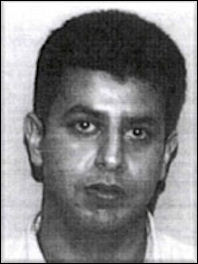
Wail al-Shehri, 9-11 Hijacker What separates Al-Qaida members from other covert groups in he past such as Soviet and German spies is that so many are willing to die. One Al-Qaida supporter said, We like justice. We are not terrorists. But if you attack us, if God wills it, we will start the third world war, and the whole world will be destroyed. Every Muslim will fight until the last Muslim is alive. Before embarking on a suicide mission some members went through a formal ceremony in which they pledged allegiance to Osama bin Laden and swore themselves to martyrdom through suicide.
Some of the most dangerous members are Takfiries, followers of an extreme Islamic ideology called Takfir wal Hijra ( Anathema and Exile ). The guy try to blend in with the crowd. They drink alcohol and hang out at nightclubs waiting for an opportunity to attack. One French official told Time, they may appealed as regular, fun-loving guys but they s slit your throat or bomb your building in a second.
Brian Jenkins, a terrorism expert at the Rand Corp., told the Washington Post, What is extraordinary about these people is that they are leading normal lives with wives, taking the garbage out...living in comparatively pleasant places, all the while knowing that on some date they are going to kill themselves and thousands of people.
Al-Qaida Martyr

Waleed al-Shehri, 9-11 Hijacker By the late 1990s suicide operations had become a core element of al-Qaeda's strategy. Not long after 9/11 a functionary in al-Qaeda's Kabul office named Azmiray al-Maarek was chosen for a suicide operation. He drafted several farewell letters, including one to bin Laden and one to his own wife. He also composed a series of poems for bin Laden. His fate is unknown. [Source: Alan Cullison, The Atlantic Monthly, September 2004, from files found on a computer used by Al-Qaida leader Ayman al-Zawahiri]
A letter to Osama bin Laden from Azmiray al-Maarek, dated November 4, 2001, read: Sheikh Osama... God protect you, and grant you highest rewards for me and for the Islamic nation. I would have liked to pray in Jerusalem but I may precede you in going where the permanent heaven is. Please be pious and firm. Here is a group of my poems. I wrote the poem "Going to God" after you gave me the good news [about being selected for a suicide operation]. Please read all these poems, particularly the last one, in public. I hope you will fulfill this wish after I die in the battle against the enemies of religion. Be hopeful. This religion will certainly be victorious. You are one of the symbols through the hands of whom God will grant us victory. You are the guardian of the Muslim nation. Nobody in our time has cared more about it. I have left my will with the brothers in Kandahar. My numbers are in the will, so please give my mother the good news. Please ask all the brothers to forgive me after my death... God reward you for me. If I am a martyr I will ask God's forgiveness for you. I hope for God's mercy. An hour of patience is the key to heaven.I hope that God joins us in heaven...Your son, Azmiray al-Maarek
A poem written by Azmiray al-Maarek read:

Al-Qaida recruit dreams about
Osama bin Laden "Going to God"
I am going to God, mother
I am going to live in His mercy
My feet will lead (guide) me
God willing, to His orders and right path.
Don't be sad, sing and ululate
God has chosen me
As a man, for I have lived every day
As a man that bought his religion and sold his whims.
Mother of my son, be hopeful and patient.
We will meet in heaven.
I will die for my nation to live.
I will be alive in heaven.
Just one push on the trigger and I'm over,
Thus disfiguring the face of the enemies.
May the faces of those who don't fear God be disfigured,
The faces of those who don't defend Him.
May the cowards never sleep.
It is shameful what is happening in Jerusalem.
Get up, coward, as a man,
And perform glorious acts. Don't fear.
Father, forgive my sins,
And feel proud of the son you'll meet in heaven.
For the principle we lived forI will die so that you may live by it, father.
A letter from Azmiray al-Maarek to his wife, dated November 6, 2001, read: Mother of Ibrahim... By the time you receive this will, I will be in the craws of birds, God willing, after having performed a martyrdom operation against the country of infidelity. This operation, God willing, will turn the tide for Islam and Muslims. My darling, and mother of my son, be pious and patient. I have preceded you to a place the inhabitants of which don't suffer. Follow me there through obedience to God Know that my death is martyrdom, my imprisonment hermitage, my exile tourism in God's land. I would like to meet you in heaven, so please help me by waking up at night to pray, fasting during the day, and staying away from temptation. God is my witness that I am satisfied with you. Any woman who dies after having obtained her husband's satisfaction is worthy of heaven. I ask God to grant you heaven. God is my witness that all your deeds were good. You were the best wife, friend, and companion. God bless you. Prayers be upon the Prophet Muhammad, all his family, and his companions...Your husband, Father of Ibrahim, Azmiray al-Maarek
Al-Qaida Suicide Bombers Who Bailed
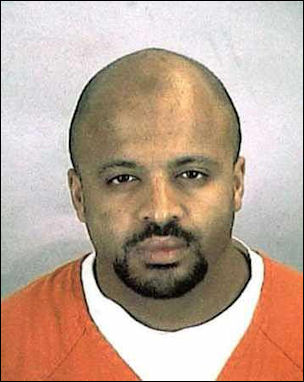
Zacarias Moussaoui
the so-called 20th 9-11 Hijacker Not all Al-Qaida suicide attackers carry through with their final act. Even some of the participants in the September 11th attack bailed. Michael Jacobson wrote in the Washington Post: Two Saudis who were selected for the plot -- Mushabib al-Hamlan and Saud al-Rashid -- decided not to participate in the attacks after leaving the training camps in Afghanistan. And in the summer of 2001, Ziad Samir Jarrah, who became the hijacker pilot on United 93, agonized about whether to withdraw from the operation. In an emotional conversation, Ramzi Binalshibh -- the Hamburg-based liaison between the plotting cell and al-Qaeda's senior leadership in Afghanistan -- persuaded Jarrah to stay. [Source: Michael Jacobson, Washington Post , March 23, 2008; Jacobson is a former staff member of the 9/11 commission and a senior fellow at the Washington Institute for Near East Policy]
On December 10, 2001, after completing his al-Qaeda training in Afghanistan and Pakistan, Sajid Badat returned home to Britain. Badat, a 22-year-old Muslim born in Gloucester, had an associate, a gangly man named Richard Reid, and the duo were now ready to carry out their mission: blowing up two separate aircraft traveling from Europe to the United States. Badat and Reid had been given identical explosive devices, specially designed to evade airport security and destroy an aircraft in mid-flight. On Dec. 22, Reid now infamous as the "shoe bomber" was jumped by his fellow passengers when he tried to light his device on an American Airlines flight from Paris to Miami. He got further than Badat, who simply bailed on the plot, leaving his dismantled bomb in his parents' house. [Source: Michael Jacobson, Washington Post , March 23, 2008; Jacobson is a former staff member of the 9/11 commission and a senior fellow at the Washington Institute for Near East Policy]
The two would-be 9/11 plotters, Rashid and Hamlan... bailed out when they left the fanatical, insular atmosphere of the Afghan training camps and returned home to Saudi Arabia. After getting a visa to enter the United States, Hamlan contacted his family, despite clear al-Qaeda instructions to the contrary. He found out that his mother was ill and decided not to return to Afghanistan, despite intense pressure from his handlers. Hamlan later moved back in with his parents and returned to college. Similarly, Badat, the would-be shoe bomber, appears to have decided to abandon the plot once he returned to Britain and resumed contact with his family.
Image Sources: Wikimedia Commons
Text Sources: New York Times, Washington Post, Los Angeles Times, Times of London, The Guardian, National Geographic, The New Yorker, Time, Newsweek, Reuters, AP, AFP, Wall Street Journal, The Atlantic Monthly, The Economist, Global Viewpoint (Christian Science Monitor), Foreign Policy, Wikipedia, BBC, CNN, NBC News, Fox News and various books and other publications.
Last updated July 2012

